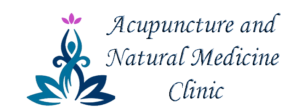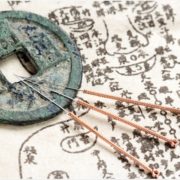Adaptations in Acupuncture
Understanding different methods & what they treat
BY HELENA AMOS, M.AC., L.AC., EURO. PHYSICIAN
Acupuncture is an alternative health care treatment that originated in China centuries ago. Its use in the United States has come a long way since it was first introduced, and its practice is often integrated with traditional Western medicine. Medical professionals may prescribe acupuncture to treat a variety of conditions, including chronic pain, infertility, and nausea associated with chemotherapy and surgery.
What most people don’t know is there are different types of acupuncture. The most popular understanding is around basic acupuncture, which involves inserting tiny disposable needles into acupuncture points distributed all over the body along so called “meridians,” or pathways of energy. Each meridian represents a different organ/system in the body, such as heart, lung, liver, kidney, lymph, stomach and more. According to the principles of Traditional Chinese Medicine (TCM), illness is caused when “Qi” (or “chi”), your electromagnetic energy, does not flow properly throughout the body. The strategic placement of acupuncture needles removes any blockages to the flow of Qi, which helps to restore the function of the organ, system, its nerves and circulation.
Variations of acupuncture methods can be used for specific health complaints, so understanding what these practices are can give you another level of care to seek for symptom relief or elimination. Here is an overview of additional acupuncture treatment options available.
Electroacupuncture
Electroacupuncture is an increasingly popular form of treatment, and is used by practitioners of TCM for a wide array of conditions. It differs from standard acupuncture in its delivery. During electroacupuncture treatment needles are inserted in specific acupuncture points and then they are attached to a device that delivers electric impulses along two points on the meridian. The device is used to adjust the frequency and intensity of the impulses, depending on the condition being treated. Electroacupuncture uses two needles at time so the impulses can pass from one needle to the other. Several pairs of needles can be stimulated simultaneously, usually for no more than 30 minutes at a time.
During a treatment session, acupuncturists determine whether Qi is weak, stagnant or otherwise out of balance, which indicates the points to be stimulated. Electroacupuncture is considered to be especially useful for conditions in which there is a stagnation of Qi, such as in chronic pain syndromes; or in cases where the Qi is deficient, such as neurological disorders like stroke and paralysis. It is also very helpful to prevent nausea, colic, and skin conditions. Furthermore, electroacupuncture activates the endorphin system and helps to lower blood pressure and reduce the occurrence of heart disease.
There is considerable debate about the origins of the practice. Some evidence points to the first use of electroacupuncture by physicians in France and Italy as far back as the early 1800s. Others attribute its discovery to Japanese scientists in the 1940s who were interested in making bone fractures heal more quickly. Still others claim that electroacupuncture wasn’t really developed until 1958, when acupuncturists in China began experimenting with it as a form of pain relief. In China they also use electroacupuncture for anesthesia.
Regardless of its origin story, it is used effectively now most notably to treat all types of pain: back pain, shoulder/elbow/neck pain, and sciatica as well as for injuries to the muscles, ligaments, and joints; plus for disease conditions of the stomach, intestines, gallbladder, and urinary bladder. However, electroacupuncture cannot be applied to people with a pacemaker, or who have cancer.
Auriculotherapy
Auriculotherapy, or auricular therapy, ear acupuncture, or auriculoacupuncture is a form of alternative medicine based on the idea that the ear is a microsystem of the entire body represented on the auricle, the outer portion of the ear. Ailments of the entire body are assumed to be treatable by solely stimulating the surface of the ear.
Auricular acupuncture has its roots in TCM,with the main reference found in a Chinese medical text stating that the kidneys open in the ears so that superfluous substances of the kidneys are deposited in the ears, making the ears an instrument of diagnosis. (The same text states that many channels, Jingluomai/meridians, exit in the ear.) However, it was French neurologist Paul Nogier who in 1957 developed the evidence-based practice of auriculotherapy as it is applied today. Nogier’s work demonstrated the ear is a micro-map of the entire body, with all body parts represented, not just the kidneys. He created charts detailing the location of the acupoints and their associated application. Similar mappings are used in reflexology and iridology.
In 1980, the medical journal PAIN published a research study conducted at the UCLA Pain Management CenterDepartment of Anesthesiology, UCLA School of Medicine that verified the scientific accuracy of ear diagnosis. There was a statistically significant level of 75% accuracy achieved in diagnosing musculoskeletal pain problems in 40 pain patients. Auricular therapy has been used for successful treatment of neurologic conditions, pain management, sleep disorders, addictions, even hiccups!
Today, common forms of auricular treatment include acupuncture needles, focused pressure, lasers, magnets, and electrical stimulation. Electrical stimulation has the advantage of also providing electrical detection of active points for precise treatment. Multiple delivery methods make this form of acupuncture attractive for those patients who are afraid of needles, or where there are bleeding or clotting concerns because of certain medications being taken by a patient.
Facial Rejuvenation
Acupuncture is the focus of and the most effective component in the Facial Rejuvenation treatment. Facial Rejuvenation Acupuncture is a painless, non-surgical method of reducing the signs of the aging process. Though Facial Rejuvenation Acupuncture can sometimes be referred to as an Acupuncture Facelift, it is more than a cosmetic procedure. It is a rejuvenation and revitalization process designed to help the whole body look and feel younger.
The Facial Rejuvenation Acupuncture treatment is also based on the principles of Eastern Medicine. Thousands of years ago the Chinese discovered that many meridians either begin or end on the face while some have internal branches that go to the face. Thus, practitioners of Facial Rejuvenation Acupuncture know specifically how to affect the face while simultaneously treating the underlying factors that contribute to the aging process. This involves the insertion of hair-thin needles into particular areas of the face, ears, neck, hands, trunk, and legs along Qi channels, or meridians of energy. Specific points are chosen to manipulate the movement of energy in the body according to the individual’s needs.
Successful treatments serve to tighten, firm, and re-educate the muscles of the face; lift jowls and eyebrows; reduce the appearance of the fine lines, wrinkles and puffiness; shrink pores; increases cell renewal and elasticity; and help lymphatic drainage. Electro microcurrent therapy is often used together with facial acupuncture. The technique stimulates areas of “motor” points to activate and exercise facial muscles in order to create a more toned youthful appearance.
Colorpuncture
Colorpuncture, or color light acupuncture, was developed by German scientist Peter Mandel, and is a safe, powerful method for children and adults. It is an alternative medicine practice—a form of chromotherapy or color therapy—asserting that colored lights can be used to stimulate acupuncture points to promote healing and better health. Ancient Egyptians, Greeks, and Chinese, who knew about the power of light and color, have practiced it for centuries.
Different colors (violet, blue, indigo, green, yellow, orange, red) correspond to different organs and chakras. For example, yellow is the Earth element and corresponds to the stomach/pancreas; green is the Wood element and links to the Liver/Gall bladder and more. Through light photons and color, which resonates at different frequencies, a practitioner can access and heal physical as well as emotional levels of the person. Addressing certain acupuncture point with different colors is said to produce a double effect on each point.
A small handheld instrument resembling a flashlight with a colored quartz rod is used to administer the light. The tip is placed directly onto acupoints or held a short distance above. Unlike acupuncture, the skin is not penetrated, making it a particularly attractive option for treating children.
Electrotherapy
Neuromuscular electrical stimulation (NMES) is the application of electrical stimulation to a group of muscles, most often for the purpose of muscle rehabilitation. NMES, or electrotherapy, is worth mentioning here because it is typically used in conjunction with acupuncture. Acupuncturists and physical therapists primarily use this technique as a form of rehabilitation after injury, stroke, or other incident that results in the loss of muscle function.
NMES is performed by passing an electrical impulse from a device through electrodes placed on the skin over the targeted muscle or muscles. For the purpose of rehabilitation, the intent of the treatment is to stimulate the nerves in the muscle with electrical impulses, since they are a natural part of the normal communication between the brain and the muscular system in an uninjured or unaffected body.
Electro-stimulation is used to relax muscle spasms, maintain or increase muscular range of motion, and increase local blood circulation. The therapy can also be applied to eliminate pain, re-educate muscle movement, and to prevent or reduce muscle deterioration due to disuse.
Familiarizing yourself with the various forms of acupuncture available and the conditions they treat opens up a whole new world of treatment possibilities for a wide range of health and wellness issues. Any procedure should be thoroughly discussed with your health practitioner before pursuing any treatment plan.



